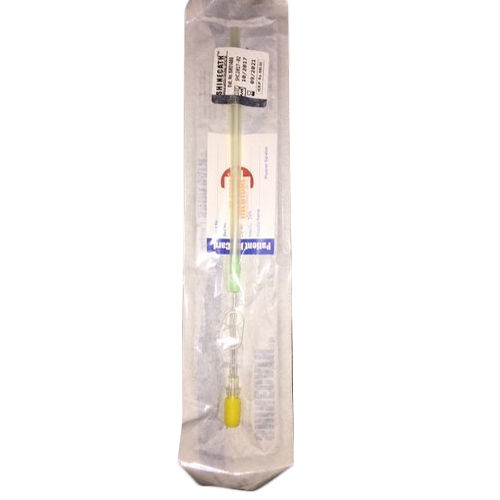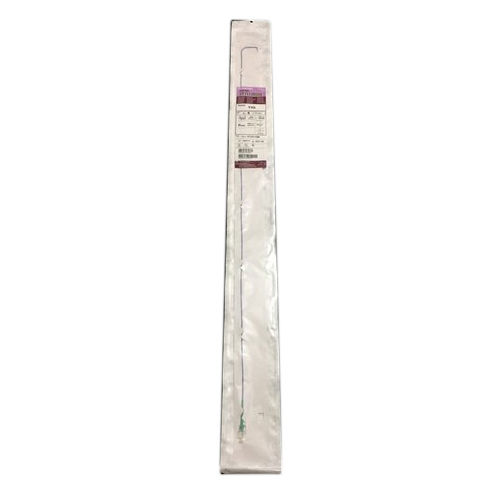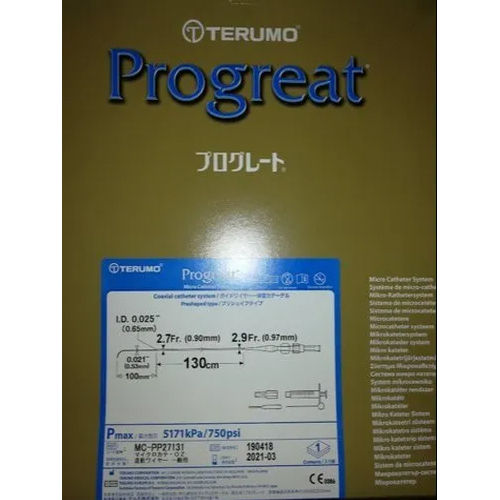
Single Femoral Catheter
130 INR/Piece
Product Details:
- Equipment Type Single Femoral Catheter
- Material Plastic
- Condition New
- Use Hospital
- Click to View more
X
Single Femoral Catheter Price And Quantity
- 130 INR/Piece
- 50 Piece
Single Femoral Catheter Product Specifications
- New
- Single Femoral Catheter
- Plastic
- Hospital
Single Femoral Catheter Trade Information
- 10000 Piece Per Week
- 4 Days
Product Description
Single femoral catheter is used for measuring pressure of artery, to provide medical personnel to access to vascular system and to administer medication. It is used as an integral part of angioplasty, angiography and various types of interventional processes. Its application can also be noticed in arotic dissection, pulmonary embolism and peripheral arterial diseases. Quick insertion method, flexible type design and application of quality tested raw materials for its manufacturing are its key features. Single femoral catheter can be used along with other medical accessories like IV pump, pressure cuffs and dialysis systems. It is accessible in different sizes.
Product details
|
Length |
13.5cm |
|
Packaging Type |
Packet |
|
Usage |
Hospital |
|
Is It Sterilized |
Sterilized |
|
Material |
Plastic |
|
Brand |
St. Stone Medical |
Frequently Asked Questions
Q: A femoral catheter: what is it?
A: A thin, flexible tube called a femoral catheter is placed into the groyne area's femoral artery or vein. It is used to monitor blood pressure and other vital signs, or to give fluids and drugs.
Q: Why would someone use a femoral catheter?
A: A femoral catheter may serve a variety of purposes, depending on the particular medical condition. It can be used to perform angiography, acquire blood samples, monitor blood pressure, deliver drugs or fluids, or offer access for other medical operations.
Q:A femoral catheter is placed in what way?
A: Typically, a qualified medical expert, such as a doctor or nurse, inserts a femoral catheter. Local anaesthesia may be used to make the region numb after cleaning and sterilising the area where the catheter will be placed. Fluoroscopy or ultrasound guidance is used to properly thread the catheter into the femoral artery or vein after making a tiny incision.
Q: Does inserting a femoral catheter hurt?
A: A local anaesthetic is typically administered to reduce pain during the treatment. However, the insertion of a femoral catheter may cause some discomfort or pressure at the point of insertion. Individual differences in discomfort levels exist, and some people may later develop minor bruising or soreness.
Q: What are the dangers and issues that a femoral catheter can cause?
A: Although the insertion of a femoral catheter is generally regarded as safe, there are some risks and problems. These can include an infection at the site of insertion, bleeding, the development of hematomas (clusters of blood under the skin), injury to blood vessels, thrombosis (the formation of blood clots), and, in extremely rare circumstances, arterial dissection or embolism. Healthcare workers must keep a close eye on the catheter and the patient for any indications of problems.
Q: How long may a catheter be inserted into the femur?
A: A person's medical condition and treatment plan will determine how long a femoral catheter can stay in place. A femoral catheter may be required for a few hours or days in some circumstances, but it may also need to be left in place for a few weeks in others. The medical staff will choose the proper time frame and keep an eye on the catheter for any indications of infection or problems.
Q: How do you take out a femoral catheter?
A: The operation to remove a femoral catheter is normally simple and quick. It is done by a medical expert who carefully removes the catheter from the site of insertion. Following the procedure, pressure may be administered to the area to stop bleeding, and a sterile bandage is frequently used to encourage healing.
Q: How should a femoral catheter be cared for at home?
A: It's crucial to adhere to the detailed instructions given by your medical team if you have a femoral catheter in place and are asked to care for it at home. The insertion site should be kept dry and clean, the catheter shouldn't be moved around a lot, and problems like infections should be watched for. Keep in regular contact with your healthcare professional if you have any questions or concerns about catheter care.
Q: When should I visit a doctor about a femoral catheter?
A: An indication of infection is increased redness, swelling, warmth, or discharge at the insertion site. If this happens, you should consult a doctor right away. Serious discomfort, bleeding that does not cease with pressure, numbness or tingling in the leg or foot, or any other odd or worrisome catheter-related symptoms should also be treated as medical emergencies.
Enter Buying Requirement Details






